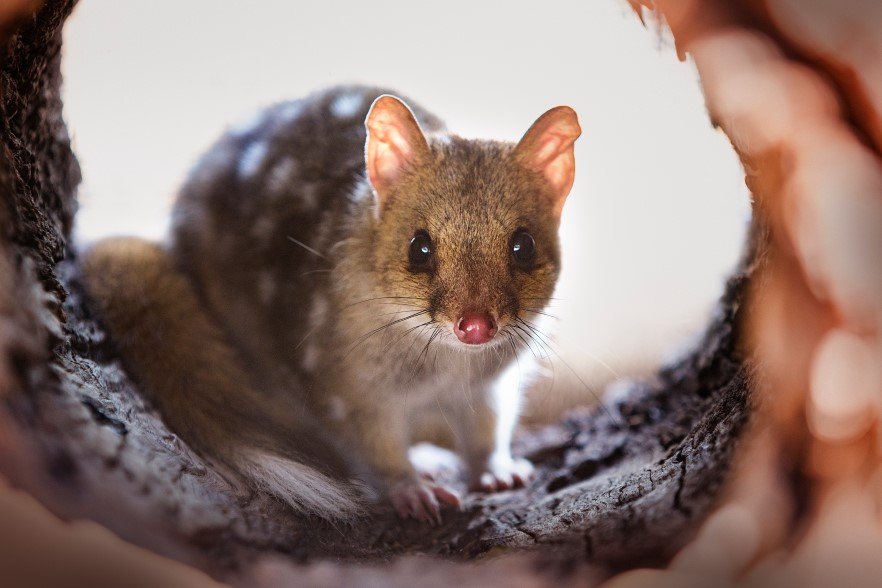Eastern quolls breed in ACT for first time in 80 years

FOR THE FIRST time in 80 years, the Australian Capital Territory has welcomed up to 42 newborn eastern quolls as part of a successful breeding program.
The tiny marsupials are the product of a joint research project – between the Australian National University, the ACT government, CSIRO, James Cook University and the Woodlands and Wetlands Trust fund – to bolster the vulnerable species’ population.
Fourteen quolls were introduced to Mulligans Flat Sanctuary in February, and – despite some of the agile climbers escaping the predator-proof fence – it didn’t take long for the remaining nine to make themselves at home.

Image: Adam McGrath
“For some time, remote cameras placed in dens have detected breeding behaviour so we were hopeful,” said Daniel Iglesias, director of ACT Parks and Conservation Servics.
“Recent captures and examinations of six females found all of them to be carrying young! It was a watershed moment as it is the best evidence to date that the quolls have settled and are doing what wild quolls do best!”
It is the fourth successful reintroduction overseen by the Woodlands and Wetlands Trust to the sanctuary since 2011 – the carnivorous marsupials joining fellow native bush-stone curlews, New Holland mice and eastern bettongs.
“As a predator, the Trust sees them as an important species to re-introduce within the enclosure,” Daniel said.
Previously found throughout mainland Australia, the eastern quoll population is now restricted to Tasmania, due to declines following the introduction of feral cats, which compete with them for prey – forcing them out of their habitat.
But researchers have high hopes that come spring, several litters of quolls will be poking their noses out of their dens and exploring their surroundings – the first time since their disappearance from the ACT 80 years ago.
“They are a spectacular sight to see in the wild and as the young start to disperse we are hopeful our night tours in October and November will be treated to the sight of wild eastern quolls for the first time on the mainland,” Daniel said.
Tours can be booked online here.
RELATED:

